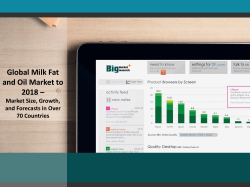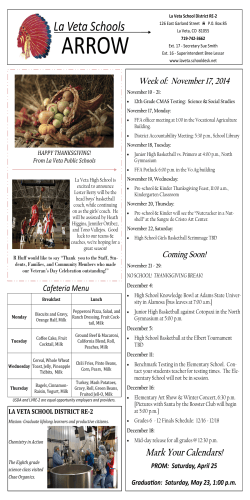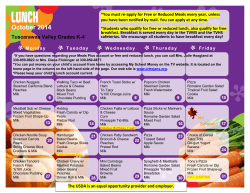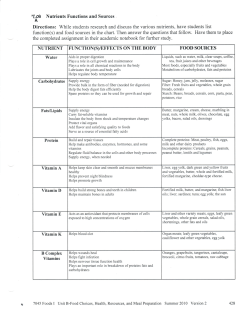
National Dairy Plan I
1 India: largest milk producer in the world It is estimated that demand for milk is likely to be About 155 million tonnes by 2016-17 Around 200 million tonnes by 2021-22 To meet the growing demand 137.69 million tonnes in 2013-14 Increase the annual incremental milk production from 4 million tonnes per year in past 10 years to about 7.5 million tonnes in the next 10 years NDP I a scientifically planned multi-state initiative to Increase the productivity of milch animals and thereby increase milk production to meet the rapidly growing demand for milk 2 World Bank (IDA) assisted Central Sector Scheme of GoI with an outlay of Rs. 2242 Crore (US$ 362 million) implemented by National Dairy Development Board through End Implementing Agencies, with an IDA credit of US $ 255 million Project Objectives: Increase productivity of milch animals and thereby increase milk production to meet the rapidly growing demand for milk through scientific breeding and feeding Provide rural milk producers with greater access to the organised milk processing sector by strengthening and expanding milk procurement system at village level 3 Component Component A Activity Breed Improvement Outlay (Rs. in Crore) US $ million 715 115 Animal Nutrition 425 69 Village Based Milk Procurement System 488 79 Project Management and Learning 132 21 1760 284 EIA Contribution 282 45 NDDB Contribution 200 32 2242 362 Component B Component C Sub Total* Grand Total *Source of Funds: World Bank- IDA- Rs. 1584 Crore (US $ 255 million), GoI- Rs. 176 Crore (US $ 28.4 million) 4 Component A: Productivity Enhancement Production of HGM cattle and buffalo bulls • Production of 2,500 HGM bulls • Import of 400 exotic bulls/ equivalent embryos Strengthening of “A” and “B” graded Semen Stations • Production of 100 million semen doses annually in the terminal year Pilot Model for Viable Doorstep AI delivery Services • 3000 MAITs carrying out annual 4 million doorstep AIs by the terminal year Ration Balancing Programme • Coverage of 2.7 million milch animals in 40,000 villages Fodder Development Programme • Production of 7,500 tonnes of certified/ truthfully labeled fodder seed • 1350 silage making/ fodder conservation demonstrations Component B: Village Based Milk Procurement System Strengthening and Expanding Milk Procurement System at Village level • 23,800 additional villages to be covered • 1.2 million additional milk producers 5 State Cooperative Dairy Federations, District Cooperative Milk Producers Unions, Producer Companies State Livestock Development Boards, Registered Societies/Trusts (NGOs) ICAR Institutes/ Veterinary Universities Central Cattle Breeding Organizations 6 7 8 Objective To meet the demand for disease free high genetic merit bulls of different breeds Breeds under Progeny Testing (PT) SOPs/MS to be followed: Each animal to be ear tagged Data capturing using INAPH Male calves born with confirmed parentage and disease free status to be procured EIA would provide specialized and trained manpower PS projects to be implemented in native tracts of the breed Annual evaluation of projects by an expert committee of PMU Cattle: Pure HF, Cross bred HF, Jersey Cross bred Buffalo: Murrah, Mehsana Breeds under Pedigree Selection (PS) Intervention Cattle: Rathi, Kankrej, Tharparkar, Gir, Sahiwal, Hariana Buffalo: Pandarpuri, Nili Ravi, Jaffarabadi, Banni 9 Objective To produce 100 million high quality disease free frozen semen doses to cover 35% of the breedable bovine animals under AI by 201617 Intervention SOPs/MS to be followed Bio security measures to be introduced Training and capacity building Adopt the common software being developed by NDDB Annual evaluation of projects by an expert committee of PMU Organisations eligible Semen Stations graded “A” or “B” by the Central Monitoring Unit and Having required infrastructure 10 Objective A scientific approach to delivery of AI services at the doorstep of the milk producers is expected to result in animals conceiving with less than two and a half inseminations Intervention in production of genetically superior calves To drive synergy, pilot model would be setup in selected villages covered by other interventions Setting up a viable model for AI delivery services in a financially self-sustainable manner Trained Mobile AI Technicians (MAITs) would carry out AI at full cost recovery basis in progressive manner The prescribed SOPs for AI delivery to be followed 11 12 Objective Intervention Milch animals produce milk commensurate with their genetic potential only when fed a balanced ration To formulate least cost balanced ration using locally available feed resources, use of user friendly software (INAPH), developed by NDDB Balanced ration helps to Local Resource Persons (LRP) to use the software are providing advices at farmer’s door step Every animal will be ear tagged to facilitate monitoring of LRPs and capturing data to assess impact increase milk production reduce cost of feeding increase in farmer’s income reduce methane emission 13 Objective Green Fodder Green fodder is an economic source of nutrients Use of truthfully labeled fodder seeds can enhance green fodder production by 50% Dry Fodder Despite perennial deficiency of dry fodder in certain areas, crop residues are wasted in surplus areas This valuable biomass can be secured, enriched and densified for use in fodder deficit areas Intervention Support to farmers engaged in fodder seed production by arranging supply of breeders seed Setting up seed processing plants for production of truthfully labeled fodder seeds Silage making demonstrations Demonstration of mowers for securing crop residues Setting up straw densification plants after enrichment with deficient nutrients 14 15 Objective Expand coverage to enable milk producers to have greater market access by creating village level infrastructure for milk collection Intervention Introduce transparent and fair operations using IT based solutions Ensure inclusive growth with focus on women and small holders Training and capacity building of stakeholders Bulk Milk Coolers, AMCUs, DPMCUs, Milk cans, weighing and testing equipment 16 17 Milk producers, village level functionaries and officials will be trained/ oriented. NDDB has training facilities at Anand and regional training centres at Siliguri, Jalandhar and Erode. Training programmes are also conducted at village and union level as per requirement. Selected persons from EIAs will also be provided training/ exposure abroad in the field of Animal Breeding and Animal Nutrition 18 Activity Nos. of approved SPPs Total Outlay in Rs. Crore In US $ million Animal Breeding 53 643 104 Progeny Testing Programme 13 238 38 Pedigree Selection Programme 10 58 9 Strengthening of Semen Stations 22 256 41 Import of Bulls/ Embryos/ Semen/ BPTIE 6 54 9 Pilot AI Delivery Services 2 36 6 118 261 42 Ration Balancing Programme 67 187 30 Fodder Development 51 74 12 Village Based Milk Procurement System 99 619 100 270 1523 246 18 25 4 288 1548 250 Animal Nutrition Sub Total Project Management & Learning Total 19 20 Return Progeny Testing Programme About 2007 bulls to be made available to semen stations by end of project. 185 bulls have been produced and distributed till Dec’ 2014. Pedigree Selection Programme To make available about 427 bulls to semen stations by end of project. 16 bulls have been produced and distributed till Dec’ 2014. Import of bulls/embryos and Bull production through imported embryos Import of 2400 embryos of HF and Jersey breeds and 200 bulls of HF and Jersey breeds. Till now 76 bulls have been imported and 480 embryos are expected to be imported by March 2015 Bull production through imported embryos to make available 210 bulls to semen stations across the country 21 Return Strengthening of Semen Stations Production of about 98.67 million doses per annum by the end of the project. About 61.83 million doses per annum has been produced in 2013-14 (by 22 approved sub-projects) 22 Return Pilot model for viable doorstep AI delivery service 4868 villages to be covered by 730 Mobile AI technicians. About 0.69 million AIs per annum are to be performed with a conception rate of 40% Till December 2014 (2014-15) 3288 villages have been covered through 555 Mobile AI technicians About 0.08 million AIs have been performed with a conception rate of 52% 23 Return Ration Balancing Programme About 20400 villages and 1.64 million animals is expected to be covered by local resource persons By 15 Mar 2015, about 7900 villages and 0.52 million animals have been covered. RBP findings Average increase in milk (kg/day/animal) – 0.2 Average increase in fat % of milk – 0.12 Average reduction in ration cost (Rs/animal/day) – 16 Percent reduction in feeding cost : 11 Increase in net daily income ((Rs/animal/day) – 25.42 Reduction in methane emission by 10 to 15% 24 Return Fodder Development Programme Setting up of 6 seed processing plants and 2 crop residues enrichment and densification plants By end of project, 124 bio mass bunkers to be constructed, 1988 silage making demonstrations to be made and 674 mowers to be procured. Till December 2014, 11 biomass bunkers have been constructed , 358 demonstrations of silage made and 127 mowers procured. 25 Return Coverage of more than 26000 villages and about 0.7 million new members are expected to be enrolled About 9590 villages and about 0.3 million producers have been covered till December 2014. 26
© Copyright 2025










